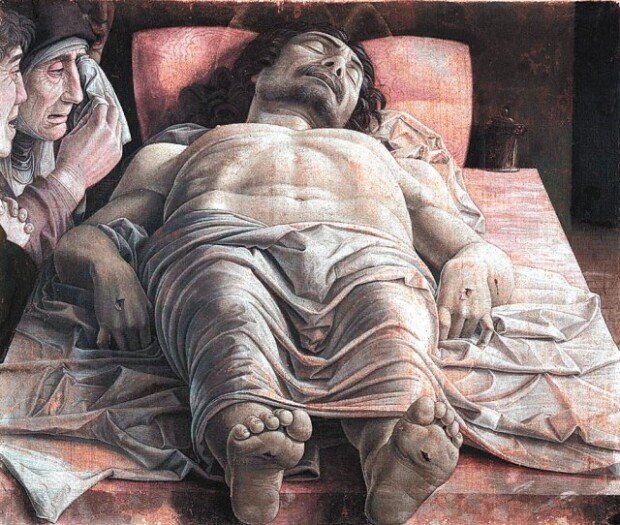Be humble in the face of death
Be humble in the face of death
Posted April. 01, 2021 07:28,
Updated April. 01, 2021 07:28

The death of Jesus Christ has never been depicted so tragically or sadly until the “Lamentation of Christ.” Andrea Mantegna, an Italian painter of the 15th century, painted dead Christ realistically enough to shock viewers. The painting was owned personally by the painter himself until his death. Why was that? While many painters painted mourning over Christ’s death, Mantegna’s painting is the most famous and experimental. First of all, its composition is unique. It was drawn from the perspective of looking at Christ from his feet. In order to fit the body of Christ vertically in a single picture, extreme foreshortening was adopted. As a result, Christ’s body seems shorter than its actual length, and his feet are much smaller. His hanging hands and feet have clear open wounds from being nailed to a cross. Christ’s face revealed above the fabric covering his cold body and wounds on the chest has the expression of pain. The woman who is wiping tears off of her face with a handkerchief is Mary. John the Apostle and Mary Magdalene are also crying next to her.
Unlike other artists, Mantegna did not try to glorify Christ. He simply showed the tragedy of a young man who died in pain. Likewise, Mary was depicted as an old mother crying out for the pain of losing her child with a wrinkly face. However, Christ was not to be depicted as the defeated. Mantegna boldly placed his genitals at the center of the painting, symbolizing the birth of a new life or hope for the Resurrection. Mantegna kept this painting by his side until his death, as the painting was produced for the chapel of his funeral, rather than for a church or aristocrat. Though he reached the highest level of wealth and fame as a court painter of Mantua, he wanted to stay humble thinking of Christ’s suffering and death.
Is there anybody who is not afraid of death? Even though the average life span increases, death is still a subject of fear. Mantegna’s painting seems like a warning to be humble in the face of death. It also seems to suggest that the grievance of loss is a natural emotion stemming from love so we should not hold it in and grieve as much as necessary.







